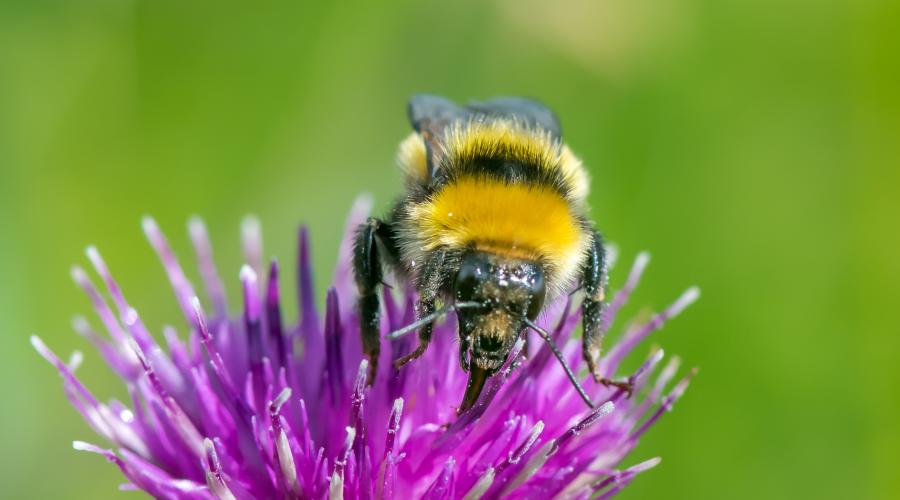
Species on the Edge - About the Programme
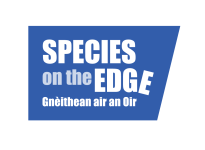
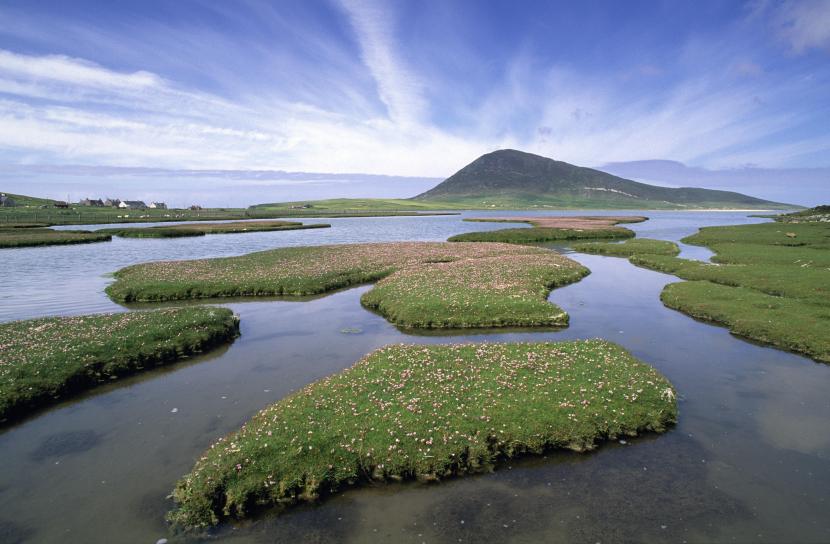
Who we are
Species on the Edge is a new ground-breaking partnership programme of NatureScot and seven nature conservation charities, all dedicated to improving the fortunes of 37 priority species found along Scotland's coast and islands.
Funded by the National Lottery Heritage Fund, we are delivering a four and a half year programme of work to tackle the impacts of environmental change on wildlife, to benefit both nature and people. The partnership consists of Amphibian and Reptile Conservation, The Bat Conservation Trust, Buglife, Bumblebee Conservation Trust, Butterfly Conservation, NatureScot, Plantlife, and RSPB Scotland.
Drawing on the knowledge and experience within the partnership, we have identified seven landscape-scale areas around Scotland’s coast and islands where collaboration will provide the greatest benefits. These seven areas are:
- The Solway Coast
- The Inner Hebrides, Argyll, Lochaber
- The Outer Hebrides
- North Scotland Coast
- Orkney Islands
- Shetland Islands
- East Scotland Coast
Action in these areas includes:
- survey and collation of conservation data to provide a better understanding of the issues;
- working with communities to identify priorities and co-produce local plans;
- enhancing habitat quality and availability;
- sowing and growing vital host and food plants for vulnerable species;
- excluding predators from sensitive sites;
- removing invasive non-native species;
- providing advice to landowners and local communities on management for biodiversity;
- providing new volunteering and supporting opportunities for a range of participants;
- creating opportunities for people to develop new skills;
- developing and supporting community and creative culture events.
Learn more about our project areas.
Learn more about the programme in our Programme Brief.
Our vision
We are working with local communities in some of Scotland’s most remote areas to establish projects that provide a vital lifeline for our most nationally and internationally vulnerable coastal and island wildlife. Working together with local communities we aim to:
- secure and improve the future for coastal and island species in Scotland;
- form a support network between communities, to safeguard vulnerable biodiversity;
- strengthen the partnership approach to conservation work in Scotland; and
- raise awareness of the importance of biodiversity to Scotland.
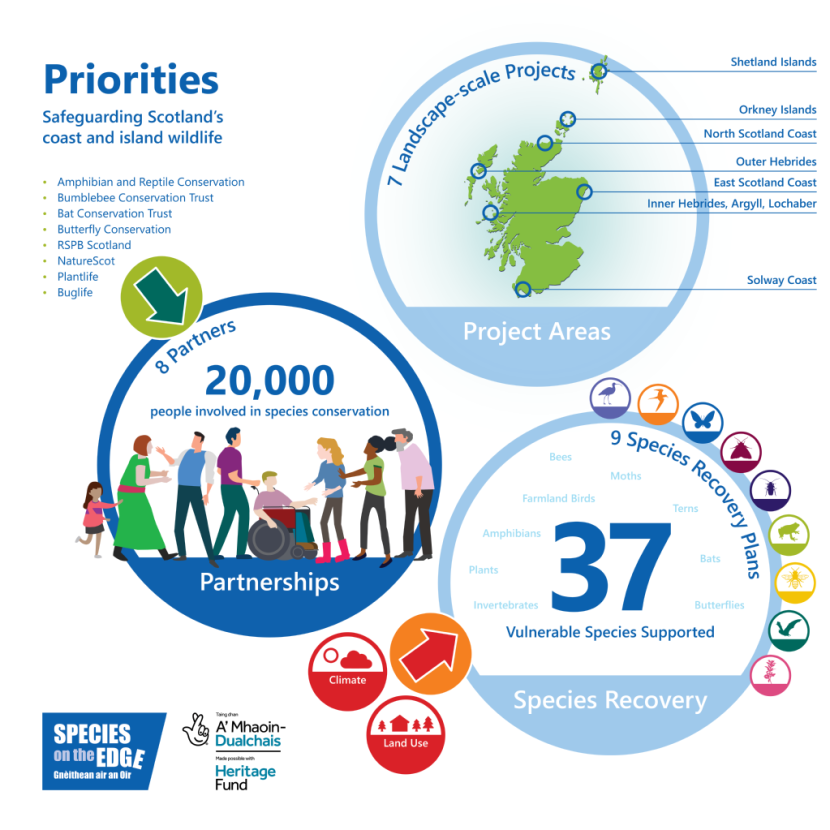
Our species
We are working to secure a future for 37 threatened and vulnerable species found on Scotland’s coasts and islands. Species have been included in our list of priority species because they are:
- highly reliant on Scotland’s less intensively managed coast and island habitats for their continued survival;
- included as a priority on the Scottish Biodiversity List; and
- we are confident that collaborative action will provide the necessary conservation benefits.
Our 37 species are:
- Arctic tern
- Bordered brown lacewing
- Brown long-eared bat
- Common pipistrelle bat
- Common tern
- Corncrake
- Curlew
- Dunlin
- Daubenton's bat
- Endemic hawkweed species
- Great yellow bumblebee
- Greenland white-fronted goose
- Irish lady's tresses
- Lapwing
- Leaf beetle
- Little tern
- Marsh fritillary
- Medicinal leech
- Moss carder bumble bee
- Natterjack toad
- New Forest burnet
- Northern brown argus
- Northern colletes mining bee
- Oysterplant
- Purple oxytropis
- Red-billed chough
- Red-necked phalarope
- Scottish primrose
- Shetland mouse-eared hawkweed
- Short-necked oil beetle
- Slender Scotch burnet
- Small blue butterfly
- Soprano pipistrelle
- Tadpole shrimp
- Talisker burnet
- Transparent burnet
- Twite
Community involvement
Human activities have contributed to the decline of some species but people are also at the heart of reversing this decline. Working with and through communities, local initiatives, and land managers, Species on the Edge is creating opportunities for people to get involved in efforts to save these species for future generations.
Through workshops, volunteering, and training opportunities, we are working with communities to identify barriers to participation, equality, or inclusion and will develop a programme to overcome this. We have invested in a programme of internship and mentoring, supporting a new generation of conservationists to gain training and skills.
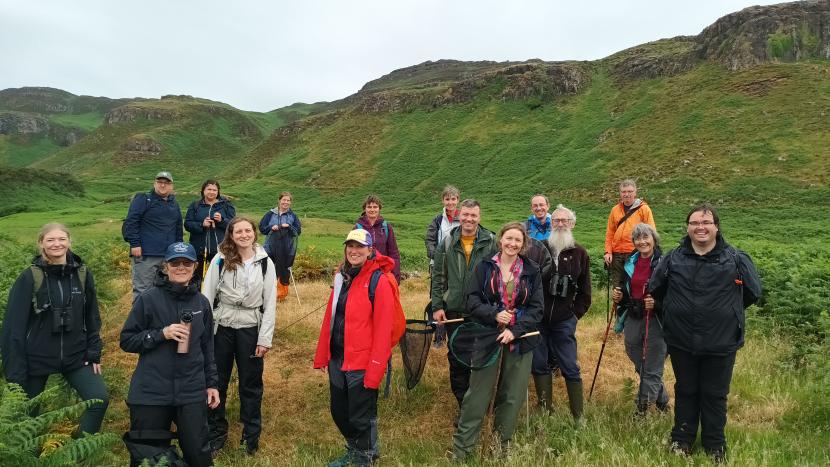
Our funding
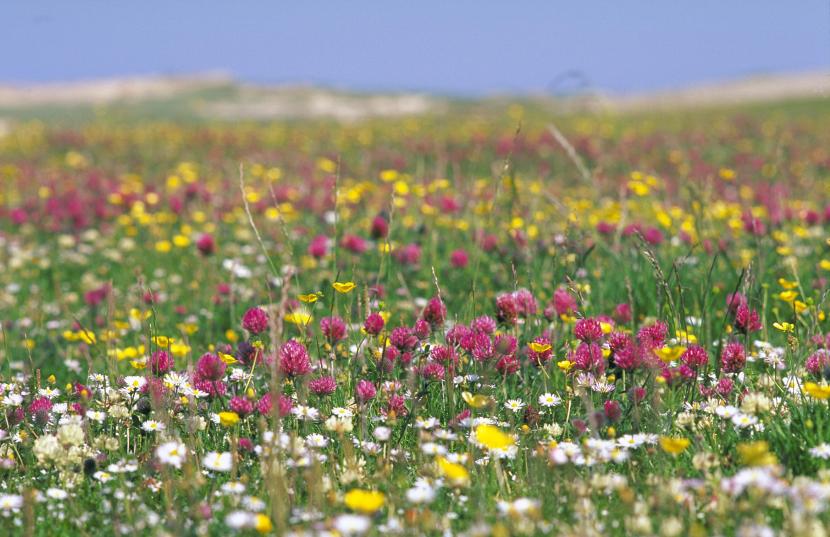
Only in the north-west of Scotland and Ireland do you find the ideal mix of features required for machair to thrive. Some rare species live in machair - the corncrake’s cry is still common, and you might spot a corn bunting. Machair is also the favoured habitat of the great yellow bumblebee.
Find out more
Species on the Edge - Project Area Summaries
Contact us
Please send all enquiries to: [email protected]
To keep up to date with the latest news and opportunities coming from the programme, follow Species on the Edge on Facebook and Twitter and sign up to our mailing list.
View our Privacy Policy.



